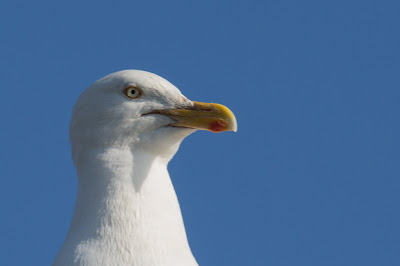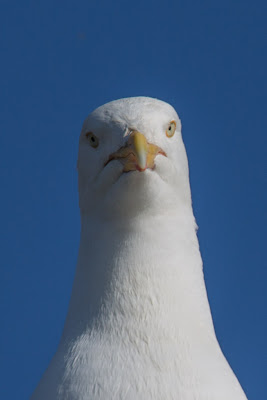From the landing place at Kirkcudbright harbour it...
...is a short 400m walk (even for a hungry and thirsty kayaker)...
...through the town's
quiet historic streets to...
...the
Selkirk Arms Hotel. The hotel has a long history and Robert Burns wrote the "Selkirk Grace" here in 1794.
“Some hae meat and canna eat, And some wad eat that want it, But we hae meat, and we can eat, And sae the Lord be thankit”
The current owners have taken full advantage of the proximity of the Kirkcudbright fishing fleet and serve a variety of seafood dishes in the hotel's restaurant, bistro and bar.
The local speciality is king scallops. These were succulent and perfectly cooked. They were served with a green pea puree and crispy slivers of pork belly.
Needless to say the Guinness was perfect and the lobster.... This delicately cooked lobster had been delivered to the hotel kitchen just a couple of hours before our arrival. It was beautifully shelled and presented and was served with a little garlic butter and parsley sauce. Stunning.
The monkfish had been landed that morning and the tails in crispy batter were served with a contrasting sweet salad and local chutney.
Not everyone likes fish and the roast pheasant was a tantalising on the tongue alternative. The thinly sliced breast meat was tender and moist and was served on a potted bed of diced leg meat and black pudding. The thick, tasty sauce from the juices had clearly been reduced for hours.
Those with simpler tastes were also well catered for. The Selkirk Burger was home made using local Galloway steak and served with crispy local dry cured bacon, lettuce and tomato. The chutney was locally made from red onions.
The service was the perfect blend of efficient and attentive without being over fussy. (Not once did I hear that dreaded command "ENJOY".)
This was a stunning table of food and I highly recommend that sea kayakers in the area make a visit for a drink and or a meal. Those from further afield could also stay in the hotel's rooms.
So how does the Selkirk Arms rate as a sea kayaking pub? Well I have had to take a mark off because it is not visible from the water and another mark off because it is a 400m walk from the slipway. So adding it all up the Selkirk Arms Hotel scores 11/10 and so rates as one of the finest sea kayaking pubs in Scotland. One of the owners, Chris, is also a sea kayaker and you may even bump into him on the water!





















































